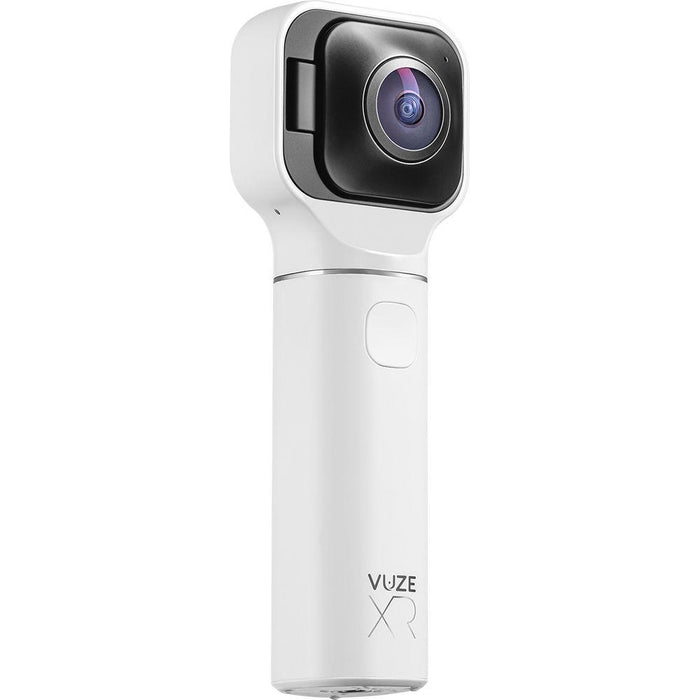

- VUZE XR 3D VR180 2D 360 5.7 K CAMERA FULL
- VUZE XR 3D VR180 2D 360 5.7 K CAMERA SOFTWARE
- VUZE XR 3D VR180 2D 360 5.7 K CAMERA PLUS
- VUZE XR 3D VR180 2D 360 5.7 K CAMERA PROFESSIONAL
Starting today through November 4, customers that pre-order will receive a free bundle that includes a 360° underwater case, a micro SD card and free worldwide shipping (valued at $175).
VUZE XR 3D VR180 2D 360 5.7 K CAMERA FULL
26, 2018) Building on its aim to make 360 degree and VR photo and video content creation accessible to all, HumanEyes Technologies announced today at Photokina the full product details for its Vuze XR Camera, which is now available for pre-order at for $439.
VUZE XR 3D VR180 2D 360 5.7 K CAMERA PLUS
The Vuze XR App gives anyone the ability to easily edit and add director-like effects to videos and photos, plus the ability to live stream to social media HUMANEYES TECHNOLOGIES LAUNCHES THE 5.7K VUZE XR CAMERAĪvailable for pre-order for $439, the Vuze XR Camera makes immersive content creation possible in 360° and VR180, both in 5.7K, all from one compact device Shipping in late November, the Vuze XR Camera enables consumers and prosumers to create and share immersive experiences in 360° (2D) or VR180 (3D) formats, both in 5.7K resolution. It gives you a very interesting new way of seeing the world.The Vuze XR Camera makes immersive content creation possible in 360° and VR180, both in 5.7K, all from one compact device, for just $439 / £399. Like most of the VR world, the category has a ways to go before this becomes mainstream, but this is a great way for people who are interested to get started.
VUZE XR 3D VR180 2D 360 5.7 K CAMERA SOFTWARE
The Vuze XR is much more flexible than the other consumer cameras, and the software seems particularly good.
VUZE XR 3D VR180 2D 360 5.7 K CAMERA PROFESSIONAL
Compared to the professional 360 or 3D cameras, the Vuze is definitely less expensive, and offers pretty good quality. I haven't used them, but the specifications for 360-degree capture are similar, though they are less flexible. There are a few other mid-range 360-degree action cameras on the market, such as the GoPro Fusion and the Insta360 (both sell for about $400), but they don't do the stereoscopic 3D capture.

Overall, I think the Vuze XR fills as important niche. Also, the icons on the side of the camera that show whether you are taking a photo or a video can be hard to read in very bright light. Every once in a while, I'd get a 4K60 video that was unexpectedly dark, and I'm still not sure why.

(There are a lot of pixels, but in a 360, you don't actually see all of them at the same time.) Note in some of the later videos I took, you can see a bit of fuzziness on the right side, because despite trying to be careful, I somehow ended up with a bit of a scratch on one of the lenses-that's my fault, not the camera's. Still, they looked quite good on a mobile device, a bit less on a big screen. Generally, I thought the 3D or 360 effects were interesting ways of capturing what the world looked like, though sometimes the final results weren't as crisp as I would like. Stabilization does add a little noise in low-light environments, but I found the resulting films to be easier to watch. The Vuze VR Studio lets you apply either shake stabilization (designed to compensate for your hand moving as your film) or a combination of shake and horizon stabilization. One of the most helpful features is stabilization. You can also change a number of more advanced options, including adjusting color and exposure (which the program calls levels), or refine how it does stitching and blending of the two images. If you've captured a stereoscopic image, you may choose to render the video from only one of the two lenses. For 180 stereoscopic, it can render for YouTube or Facebook, or choose from custom settings and sizes. For 360 video, VR Studio can render videos in the formats preferred by YouTube, Facebook, or Vimeo. You select the video you want to work on choose from some options, such as picking start and end times, or flipping the video and then choose the platform you want it rendered for.

I found the VR Studio software to be pretty easy to use for basic functions.


 0 kommentar(er)
0 kommentar(er)
